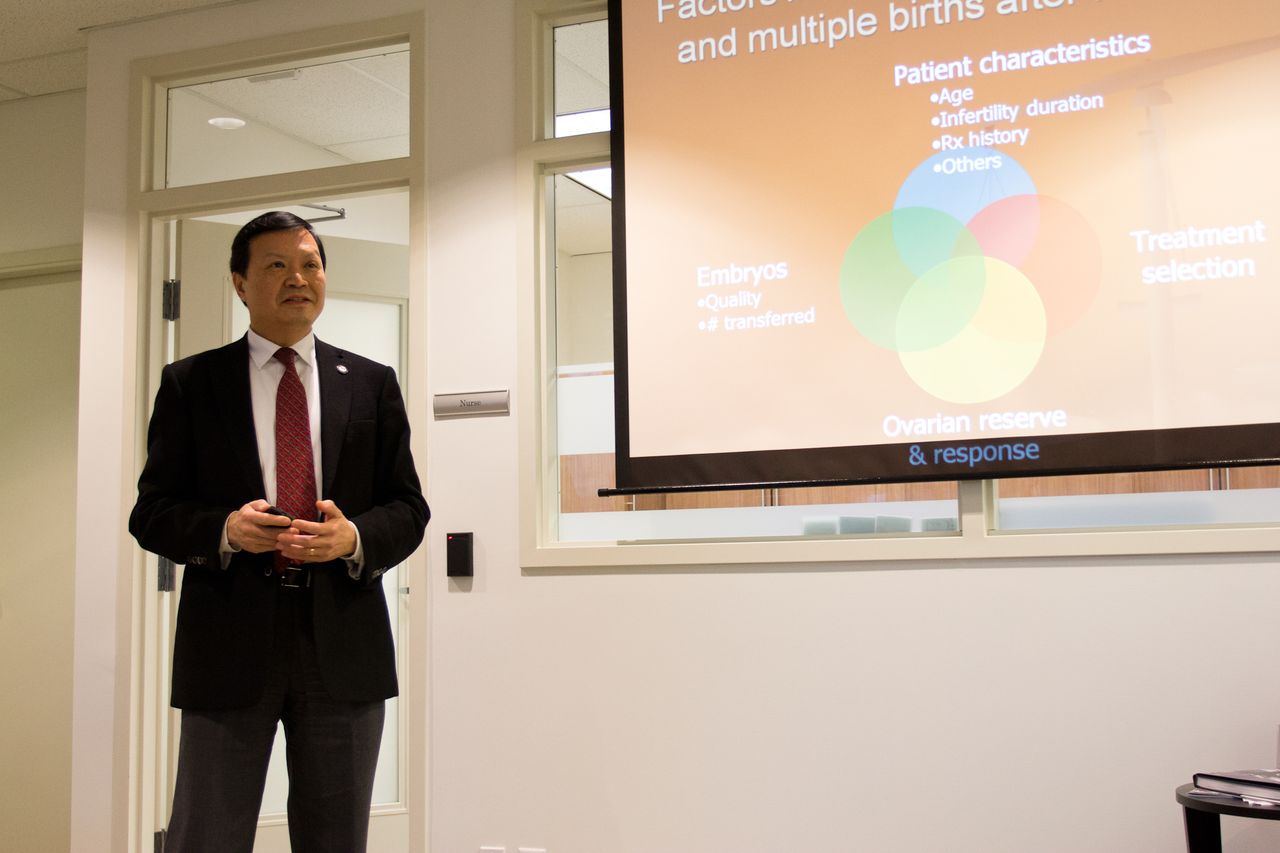Dr. Anthony Cheung Explains Polycystic Ovary Syndrome (PCOS)
March 29, 2023
By Bronwyn Williams

What is polycystic ovary syndrome (PCOS)?
Polycystic ovary syndrome is a condition in women that covers a spectrum of variable features, but is typically characterized by increased male hormones (androgens) and irregular periods, hence, lack of regular ovulation. Doctors may suspect increased androgens because of physical changes such as excessive hair growth, or the increased androgens may be discovered by blood tests. The diagnosis of PCOS is on the proviso that other causes of irregular menstrual periods and elevated androgens have been excluded. Using this definition, PCOS is estimated to affect 6-7% of women in the reproductive age.
What are some of the main causes of PCOS?
More recent diagnostic criteria have broadened the definition to include at least two of the following three features:
Increased production of androgens, or the presence of physical effects of the latter
Continual lack of ovulation
Ultrasound changes showing multiple, round fluid-filled “cysts” usually less than 8 mm in diameter, in the ovary, giving a “polycystic” appearance
Androgens and their role in PCOS
Note that some androgens are normally present in women, but when androgen levels rise too high, this upsets the normal female hormone balance and interferes with ovulation, which causes infrequent menstrual periods. Excessive weight and/or fat distribution around the waist (leading to an increased waist-to-hip ratio) as well pre-diabetic metabolic changes are also features in some women with PCOS and can also disturb hormone signals that regulate the menstrual cycle, resulting in no or infrequent ovulation.
PCOS cysts explained
These “cysts” are similar to the physiological cysts or “follicles” seen in the normal ovary. However, in PCOS, they are present in larger numbers and are found, typically, around the periphery of the ovary. They fail to undergo the normal growth and development that leads to ovulation in the normal menstrual cycle.
Letrozole and ovarian drilling
Before letrozole has become a treatment option, the next step for those who have failed to respond to clomiphene is gonadotropin treatment (see below) or a surgical procedure called laparoscopic “ovarian drilling”. The procedure requires general anesthetics and involves passing a laparoscope – a thin tube containing an optic device attached to a camera for display on a monitor — through the abdominal wall to directly visualize the pelvic structures, including the ovaries — to facilitate “drilling” holes superficially on the surface of each ovary. Despite its claims to be as effective as gonadotropin treatment, the dose chosen to define clomiphene failure is not uniform and the procedure is not without its drawbacks. This procedure should be considered only in women with PCOS who have failed to respond to adequate doses of clomiphene or letrozole and when there is a concurrent reason for laparoscopy.
Understanding the ongoing debate in diagnosing PCOS
Using the above broadened criteria, women can be classified as having PCOS with just irregular cycles and ultrasound appearance of polycystic ovaries but without features related to increased androgens or altered fat distribution, obesity and pre-diabetic metabolic changes. This has generated an ongoing debate on what characteristics should be included in the diagnosis of PCOS.
Because excessive weight, altered fat distribution in the waist and hip and/or pre-diabetic metabolic changes are considered long-term health risks, it has recently been suggested, that a new name be created for this group so that a definitive “diagnosis” can be made early for appropriate health promotion and preventive measures, while the name “PCOS” continues to be applied to those related to reproduction (with footnotes categorizing the specific features).